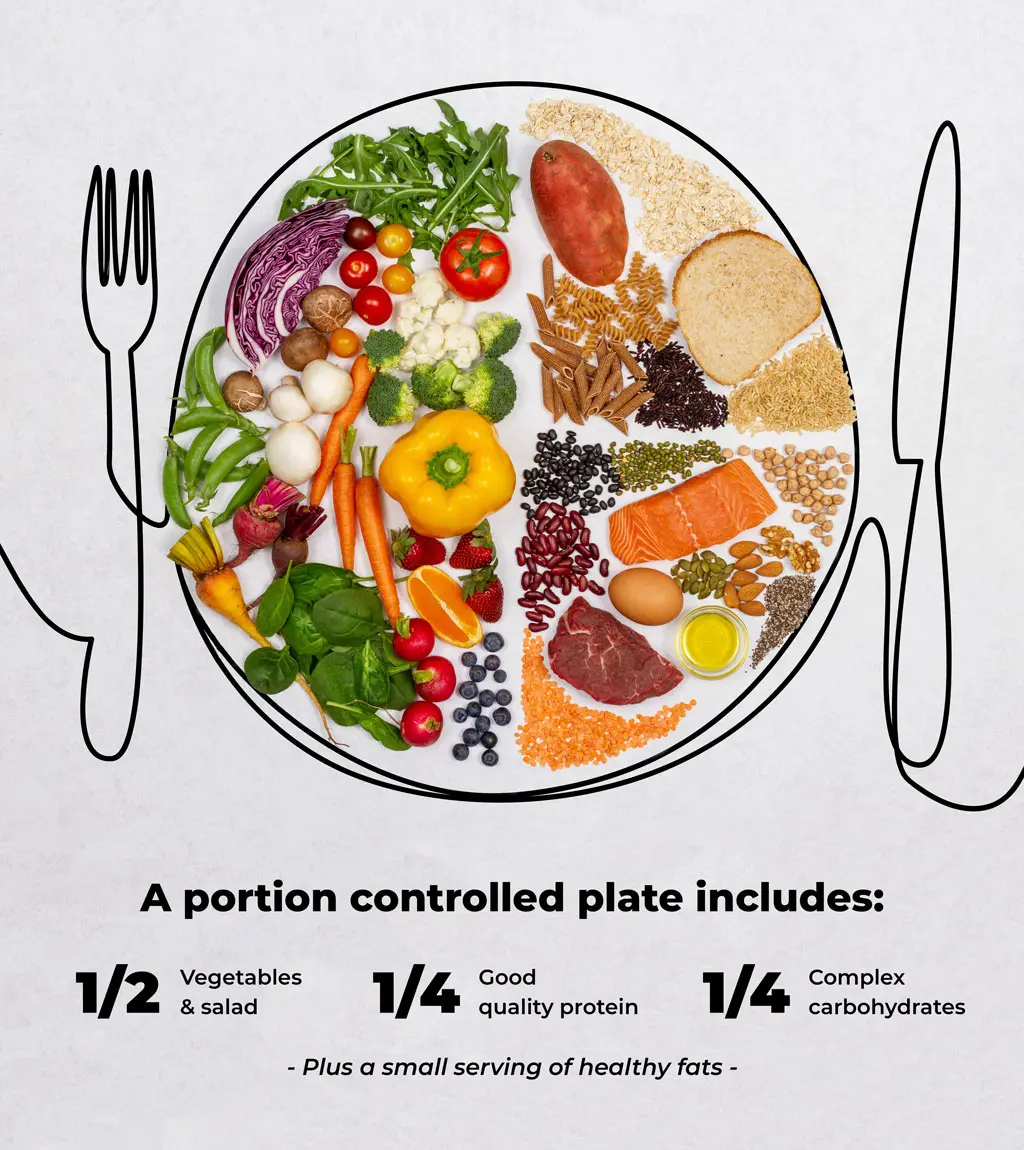Maintaining a healthy lifestyle doesn’t have to break the bank. Eating nutritious meals, staying active, and living well can be achieved on a budget with thoughtful planning and smart choices. Rising food costs often discourage people from prioritizing health, but it’s possible to make nutritious eating affordable.
This guide offers practical strategies for healthy grocery shopping, meal planning, and making the most of what you have. With these tips, you can balance nutrition and affordability, proving that a healthy lifestyle is accessible for everyone.
1. Plan Your Meals Ahead of Time
Meal planning is the cornerstone of eating well on a budget. By planning your meals in advance, you can avoid impulse purchases, reduce waste, and ensure you’re getting balanced nutrition.
Start by creating a weekly menu that includes simple, wholesome meals. Focus on recipes that use inexpensive yet nutritious ingredients like lentils, beans, rice, and seasonal vegetables. Write a shopping list based on your plan and stick to it to avoid unnecessary spending.
Meal prep can also save time and money. Cooking in bulk and freezing portions means you’ll always have a healthy meal ready, reducing the temptation to opt for costly takeout.
2. Shop Smart with Budget-Friendly Groceries
Grocery shopping on a budget requires a strategic approach. Stick to these tips to make the most of your money:
- Buy in Bulk: Staples like grains, oats, and nuts are often cheaper when purchased in bulk.
- Choose Generic Brands: Store brands often offer the same quality as name brands but at a fraction of the cost.
- Shop Seasonally: Seasonal fruits and vegetables are fresher, tastier, and more affordable.
- Use Coupons and Discounts: Look out for deals and discounts at your local stores to save money on healthy items.
- Avoid Processed Foods: Pre-packaged and processed items are not only less healthy but also more expensive compared to whole foods.
By focusing on fresh, whole ingredients, you can eat healthily without overspending.
3. Cook at Home to Save Money and Eat Healthier
Home-cooked meals are both healthier and more economical than dining out or buying ready-made food. Cooking allows you to control ingredients, portion sizes, and nutritional content.
Learning to prepare simple, versatile dishes is key. Start with easy recipes like soups, stir-fries, and salads, which can be made with affordable ingredients. Use leftovers creatively to minimize waste—for example, turn roasted vegetables into a soup or use yesterday’s chicken in a salad.

Investing in basic kitchen tools, such as a slow cooker or blender, can also help you prepare nutritious meals efficiently and on a budget.
4. Incorporate Affordable Superfoods
You don’t need exotic or expensive items to boost your diet. Many budget-friendly foods are packed with nutrients and deliver health benefits similar to their pricier counterparts.
- Oats: High in fiber and perfect for breakfast or snacks.
- Eggs: A protein powerhouse that’s versatile and inexpensive.
- Beans and Lentils: Rich in protein and fiber, they’re a cost-effective alternative to meat.
- Frozen Vegetables: Equally nutritious as fresh produce but often cheaper and longer-lasting.
- Canned Fish: Affordable and loaded with omega-3 fatty acids.
By choosing these cost-effective staples, you can maintain a nutrient-rich diet without overspending.
5. Practice Portion Control and Mindful Eating
Overeating not only affects your health but also your budget. Mindful eating and portion control can help you avoid wasting food and money.

- Measure Your Portions: Use measuring cups or a kitchen scale to ensure you’re not over-serving.
- Listen to Your Body: Eat slowly and stop when you’re full to avoid consuming more than you need.
- Avoid Emotional Eating: Find alternatives to stress eating, like walking or practicing yoga, to keep your health goals on track.
Mindful eating habits not only save money but also promote a healthier relationship with food.
6. Stay Hydrated Without Overspending
Hydration is a key part of a healthy lifestyle, but that doesn’t mean you need expensive drinks. Water is the most affordable and effective way to stay hydrated.

Invest in a reusable water bottle to carry with you and refill it throughout the day. Avoid sugary sodas, energy drinks, and store-bought juices, which can be costly and packed with empty calories. If plain water feels boring, add natural flavors with slices of lemon, cucumber, or mint.
Prioritizing water over other beverages supports both your health and your wallet.
7. Make Fitness Affordable
A healthy lifestyle isn’t just about eating well—it also involves staying active. Fortunately, fitness doesn’t have to come with a hefty price tag.
- Utilize Free Workouts: Take advantage of free online fitness videos or apps.
- Walk or Run Outdoors: Parks and trails are great for getting active without spending money.
- Try Bodyweight Exercises: Activities like push-ups, squats, and yoga require no equipment.
- Join Community Classes: Look for affordable or free fitness classes offered in your area.
Staying fit on a budget is possible with a little creativity and resourcefulness.
8. The Benefits of Growing Your Own Food

If you have space, consider starting a small garden to grow fruits, vegetables, or herbs. Gardening not only provides access to fresh, organic produce but also reduces grocery bills over time.
Even with limited space, container gardening or balcony planters can yield crops like tomatoes, basil, or lettuce. Gardening is also a rewarding activity that promotes mental and physical well-being.
By incorporating homegrown ingredients into your meals, you can further enhance your healthy lifestyle while keeping costs low.
9. Track Your Expenses and Adjust Accordingly
Tracking your spending is essential for maintaining a budget-friendly healthy lifestyle. Monitor how much you’re spending on groceries, fitness, and other health-related items to identify areas where you can cut costs.
Consider using budgeting apps to keep a detailed record of your expenses. Regularly reviewing your spending habits will help you stay on track and make informed decisions about where to allocate your money.
Budgeting doesn’t have to be restrictive—it’s about finding the right balance between affordability and wellness.
10. Embrace a Positive Mindset for Lasting Success
A healthy lifestyle on a budget requires dedication and patience. It’s important to focus on progress, not perfection. Celebrate small victories, like preparing your first budget-friendly meal or completing a week of consistent workouts.
Remember, adopting a healthy lifestyle is a journey, not a destination. With each step, you’ll build habits that lead to long-term success and better overall well-being.
Conclusion: Wellness Without Breaking the Bank
Living a healthy lifestyle on a budget is achievable with smart planning, mindful choices, and a bit of creativity. From meal planning and shopping wisely to staying active and tracking expenses, there are countless ways to prioritize health without overspending.
Take these tips to heart and start implementing small changes in your daily routine. Your body, mind, and wallet will thank you. For more practical advice on leading a balanced life, explore our website and join the conversation by sharing your thoughts in the comments below. Let’s inspire each other to embrace wellness affordably!

Leave a Reply